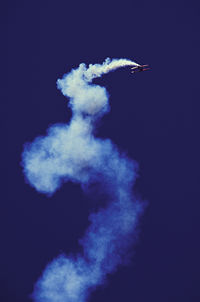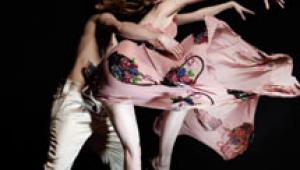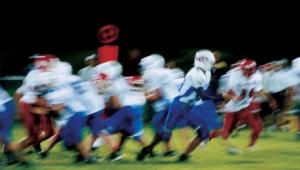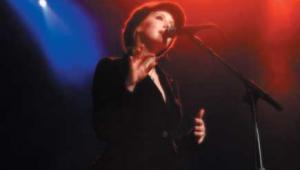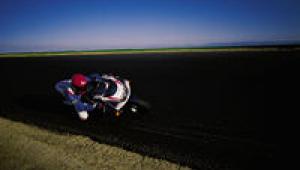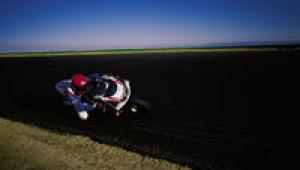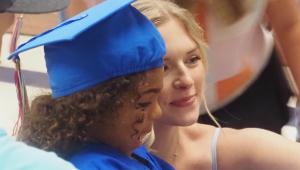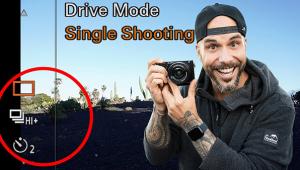Action Photography Page 4
| Lenses Like all serious photographers, professional action shooters use the lens focal lengths they need to get the pictures they want. For sports where they can't get right up close to the action, this generally means the aforementioned superfast supertelephoto lenses—the 300mm f/2.8, 400mm f/2.8 and 600mm f/4. These lenses bring distant action to them, while allowing them use faster shutter speeds to "freeze" it, and slower films for better image quality. But the superfast superteles are quite awkward and bulky, and as noted, very expensive. Non-pro shooters on a budget can make do with slower long lenses by using faster films. Popular lens choices among those of us who can't afford the exotic pro optics include 300mm f/4 and 400mm f/5.6 superteles, and 75-300mm and 100-400mm or 200-400mm zooms. Another great "economy" combo is a 200mm f/2.8 lens plus 1.4X or 2X tele-converter (which convert the 200/2.8 into a 280mm f/4 or 400mm f/5.6, respectively). Today's ISO 400 and 800 color-print films are excellent, so you can get some great images with the slower-lens/faster-film combinations. Mirror lenses are another economy option—they're not as crisp as regular supertelephotos, and are slower (500mm f/8 is a common example), but they cost a lot less, are much shorter, and can focus much closer. Of course, there's a lot of action that can be better captured with shorter focal lengths—if you can gain close access to the action. (As mentioned earlier, you're more likely to be able to do that at amateur events at a local park or recreation area than at pro events.) When you move close with a wider-angle lens, you expand the perspective and really give the viewers the sense that they're part of the action. Shooting from farther away with a longer lens flattens perspective, a less-dynamic effect, although it still brings the viewer into the action. Be careful when shooting at close range, though—don't get in the way, or hurt. Flash How far away will a given flash unit let you shoot? Divide the flash unit's guide number for the film speed you're using by the maximum aperture of the lens you'll be using, and you'll know. For example, if you're using ISO 100 film and a 400mm f/5.6 lens with a flash unit that has an ISO 100 guide number of 112 (in feet), 112 divided by 5.6 = 20 feet. If you want to shoot flash pictures from farther away, you need a faster film, a faster lens, or a more-powerful flash unit (hint: it's a lot cheaper to switch to faster film). Of course, power isn't the only flash feature that's useful for action work. TTL automatic exposure control is a big help. With TTL flash, all you have to do is shoot; the camera and flash circuitry automatically adjust the flash output for proper exposures at any aperture (within the flash unit's effective range). There's no need to measure shooting distances and calculate f-stops. Automatically balanced fill-flash (Nikon calls its version 3D Multi-Sensor Balanced Fill-Flash; Canon calls its version E-TTL flash) automatically balances flash and existing-light exposures so that the flash-lit nearby subject and the ambient-lit background both come out looking natural in the picture. Slow-sync flash employs a slow shutter speed to record detail in a dim background while the flash properly exposes the nearby subject. Rear-sync flash is handy for motion special effects. With normal front-sync flash, the flash fires at the start of the exposure. If you make a long exposure of a subject moving across the image plane, the flash burst will sharply record the subject at its starting point, then the ambient-light exposure will record a ghost streak as the subject moves across the picture. The result is an image in which a "speed streak" appears in front of the subject—an unnatural effect. With rear sync, the flash fires at the end of the long exposure, so the ghost-image "speed streak" appears behind the subject in the picture—a more natural effect. Not all cameras offer rear sync, so if you think you might want to use this technique, get one that has it. While photographers often refer to electronic flash units as "strobes," true strobes are flash units that fire repeatedly at a rapid rate. Many higher-end flash units offer a repeating "strobe" mode, and you can use this to produce another action special effect: several points in the movement frozen in the same picture. A couple of things to keep in mind about strobe: First, the flash output is very low in strobe mode, so you have to put the flash unit very close to the subject. Second, the background will receive exposure from each burst of the strobe, and could become overexposed. To avoid this, position the strobe so that it lights the subject from the side, and thus doesn't illuminate the background—or shoot in a large unlit area outdoors at night, where there's nothing in the background. High-speed sync is another flash feature that sounds great for action—with it, you can shoot flash photos at higher than normal shutter speeds, especially handy for fill-flash in sunlight. But as is the case with strobe mode, the flash fires at very low power in high-speed sync mode, so the flash unit must be positioned very close to the subject. (And exception is leaf-shutter medium-format cameras, which sync at all shutter speeds even with the flash at full power. But these cameras have fairly slow top shutter speeds—generally, 1/500 or thereabouts.) |
- Log in or register to post comments

